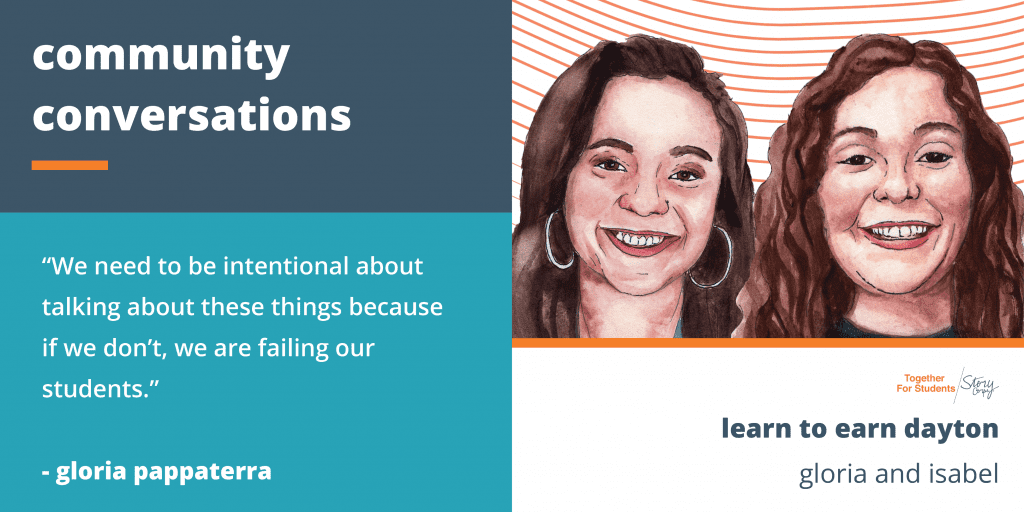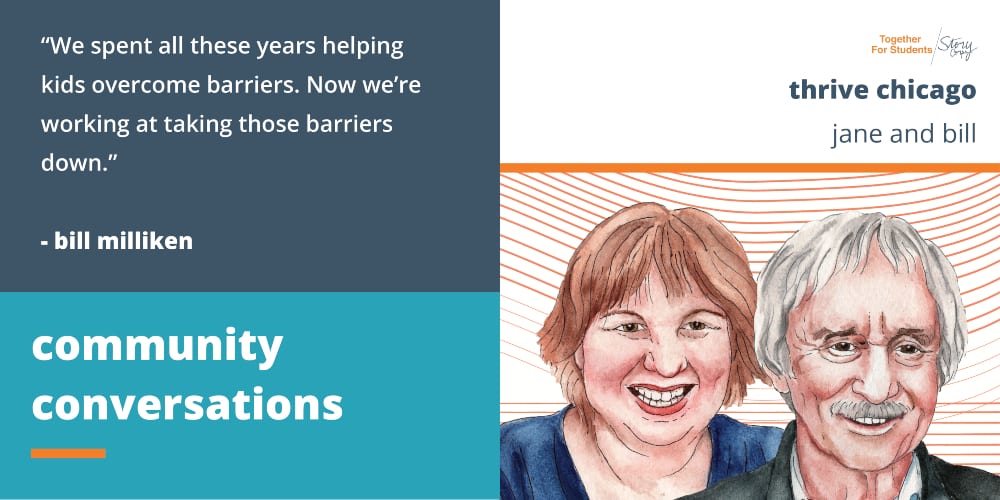
When I was a child, I loved to hear stories. Frankly, I still do. And not just the stories of mythical creatures or fairy tales, but stories that help me understand who I am and where I come from. Storytelling isn’t just about entertainment, it’s also the primary means for building and cultivating culture, traditions and belonging. Most importantly, when someone shares their past and lived experience, they are telling you a truth. Their story is valuable data.
This is why StriveTogether partnered with StoryCorps and Together For Students to capture stories from Chicago, Ill.; Dayton, Ohio; Lehigh Valley, Penn.; and Memphis, Tenn. Recorded at the height of the pandemic, these conversations shed light on the values that bring people together.
Stories — and the qualitative data they provide — have a history of being undervalued in our country. When we talk data, we want cold, hard numbers, which means we often forget the person and story behind each of those data points. Stories provide valuable information that give quantitative data context. Without grounding in the stories of how people are affected, numbers only give us a partial view of how kids and families experience systemic issues.
In a recent Atlantic article (We Mourn for All We Do Not Know), Clint Smith wrote that sharing stories from individuals “remind you that they were a person, not a stat, not a little side note, not a little entry in a genealogical chart. They were a real, living, breathing human being.” Harnessing the power of stories as a key qualitative data element roots us in our shared humanity. A story humanizes each of our experiences in a way that a chart or graph never will.
Stories provide clarity when data is clouded by aggregation. We often rely on aggregated data to provide shortcuts or make things easier to understand, but we must remember that aggregate data can perpetuate inequality. For example, when people use metrics about the success of “Asian-American” families in the United States, they often forget that this erases the experiences of lesser-established communities, like the Burmese, Nepalese, Cambodian and Pacific Islander communities. This, in turn, provides an inaccurate picture of the experiences and reality of different communities.
New perspectives can yield unexpected insights. Standard single stories or mental models can shroud our ability to think critically and differently about a challenge. In the social sector, we often trust that the “leaders” sitting at the table are best positioned to understand and solve a problem. But power and privilege can cloud our understanding. In the conversation between Alyssa and Dylan Payton in Memphis, Tenn., we hear how children and school administrators have been impacted through the COVID-19 crisis from the perspective of 7-year-old Dylan. The authenticity that comes from a story can help us understand a root cause. In this short story, I heard a parent who loves her children and her job, but also needs time for self-care. As we analyze data to figure out how to support school district staff or parents in the midst of a public health crisis, we can’t miss the underlying factors that are brought to life in a story.

Storytelling and listening builds empathy and connection. We’re often separated by categories in data (class, race, geography, age, etc.), but qualitative data helps provide deeper connection through experiences and values — those things that transcend typical quantitative data sets. Stories enable us to acknowledge and experience empathy for others in our community who may otherwise only be seen as statistics. It also makes visible the invisible by showing us how our neighbors often have struggles that we don’t even realize — struggles that we can collectively overcome. For example, Diamond Howard and Simone Woods in Chicago, Ill., help show that the assumptions we hold about meritocracy are shallow and incomplete.
As our nation faces a dramatic reckoning of systemic failures — from public health, racial injustice and economics — there are many opportunities to redefine what’s possible and what it would mean to build back to last. To transform systems to ensure an equitable future, communities must use qualitative data to construct a comprehensive picture of what kids and families really need. Not only do stories inform us of what has passed, they also give us a picture of what is possible.
Maya Angelou said that there is no greater agony than bearing an untold story inside you. I surmise that there is no greater tragedy for our communities than ignoring or stifling the stories of our neighbors. Until we share these important truths, the story of our communities and their untold potential will remain incomplete. Whether we realize it or not, we’re currently writing the story of now for future generations. Let it be a story of compassion, of boldness in truth, and one that unleashes the stories in all of us.
Together For Students is a national collaboration that leverages the strengths of Communities In Schools, the Institute for Educational Leadership’s Coalition for Community Schools and StriveTogether. Together For Students is funded by the Chan Zuckerberg Initiative.





